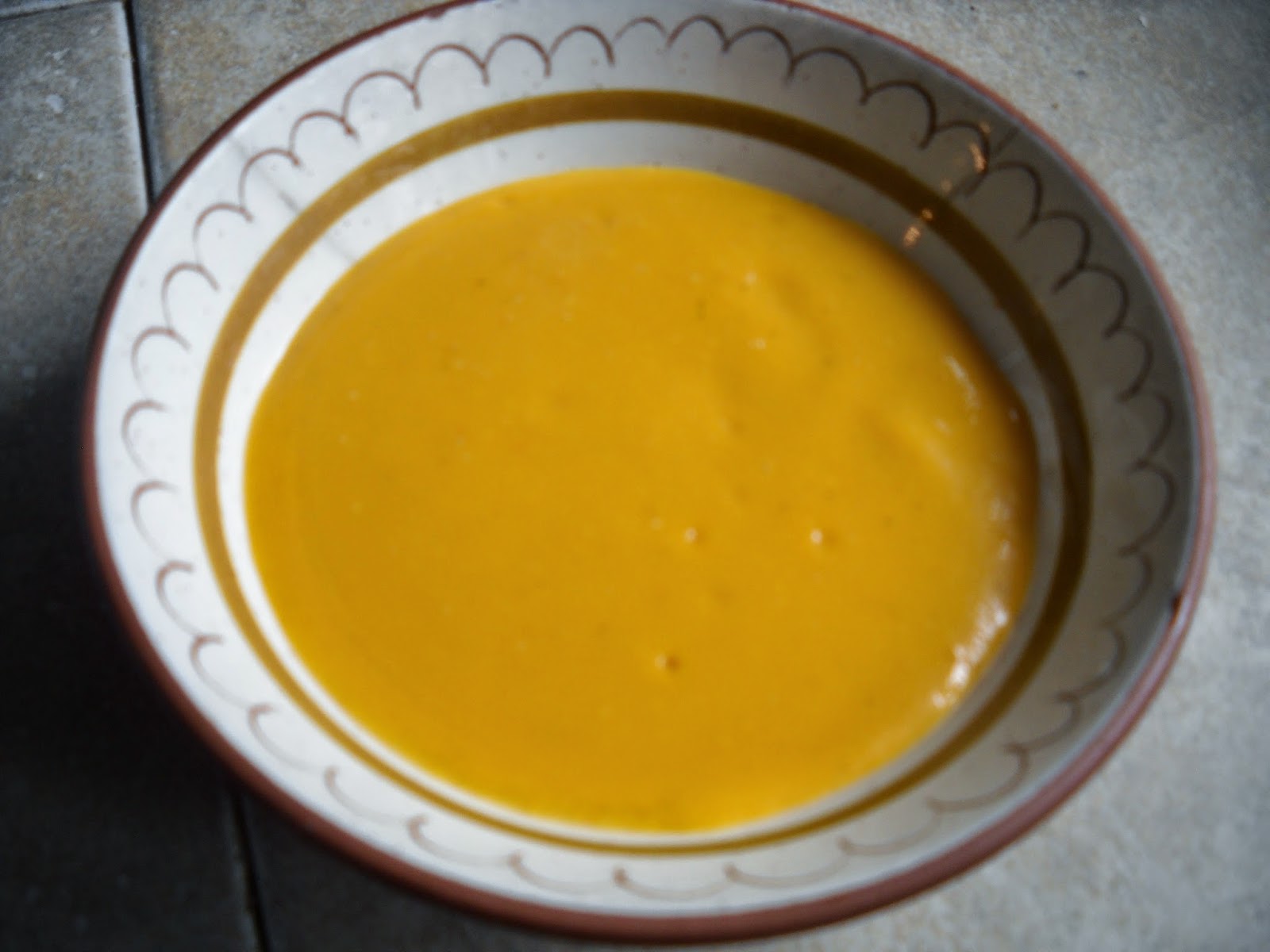This time we are starting with the final result, the soup.
It's not butternut squash, carrot or any other yellow root vegetables you might think of.
It is tomato soup made with Sun Gold tomatoes!
The Sun Gold plants have produced an incredible amount of tomatoes this year. Recently I wondered what a tomato soup made just with these tomatoes would taste like. The tomatoes are so good, I keep a bowl on the counter just for a snack.
And so I began, tomatoes, onion and garlic...
Chop the onions and garlic. Saute the onions in a tablespoon of olive oil until they are tender, then add the garlic and cook for just a minute more. You don't want the onion or garlic to brown, just soften. Season with salt, pepper and thyme. If you have fresh thyme, cut some stems, tie them together with kitchen twine and throw the bunch into the pot. Dried thyme works too, add it before you add the tomatoes, let it cook 1 minute.
Add the tomatoes to the pot.
Cover, turn the heat down to a simmer, cover and cook until the tomatoes have burst, and cooked down. When the tomatoes are cooked, after about 45 minutes or so, turn the heat off and let the tomato mixture cook slightly. Process portions of the tomatoes in a blender or a food mill if you have one. The blender grinds up the tomato skins almost completely.
Next pour the blender processed soup through a wire mess sieve to get a smooth soup without seeds or bits of skin. If you used a food mill, it will trap the seeds and skin as the soup is ground.
This has a very different flavor than the red tomato soup and is a great way to use up the massive number of tomatoes that the Sun Gold plants produce! If you just can't manage to eat it all as you make it, just freeze for a delicious winter treat and tasty memory of those great summer flavors!
Had some for lunch today...YUMMY!

















